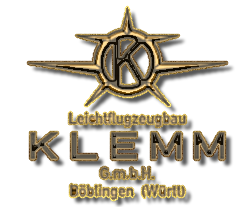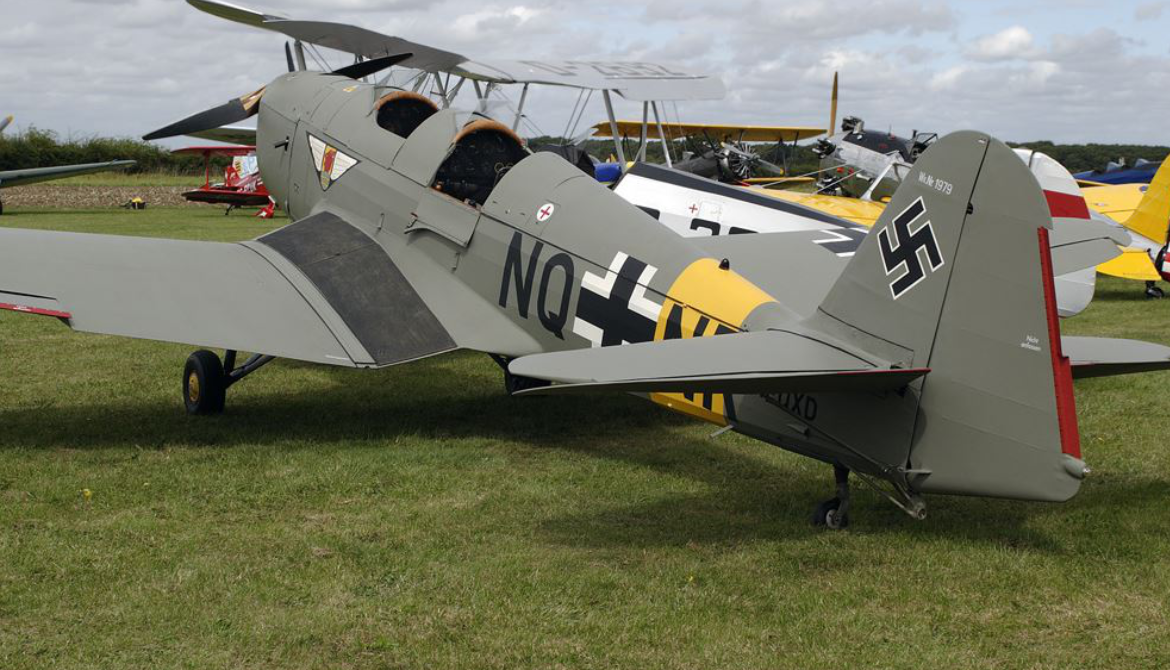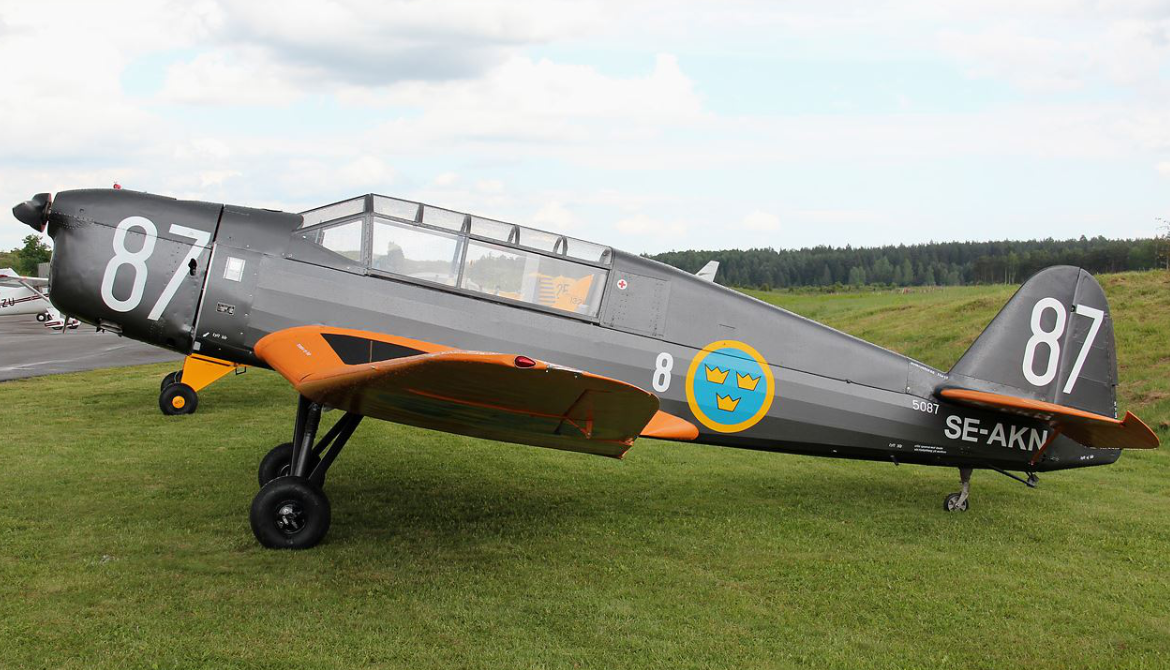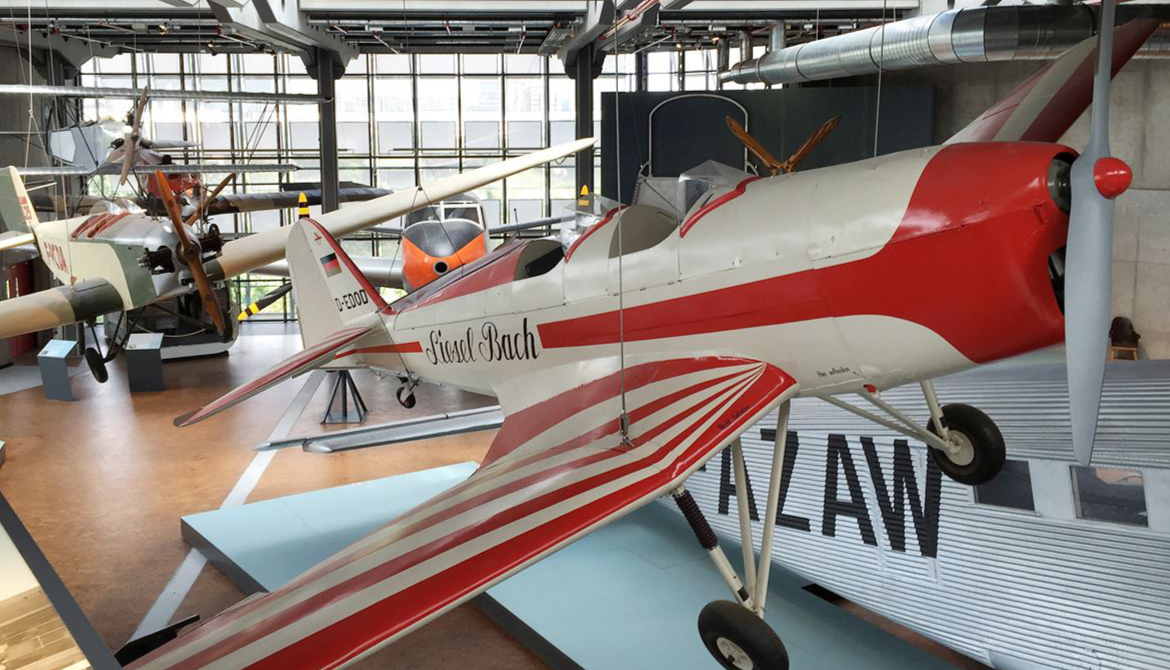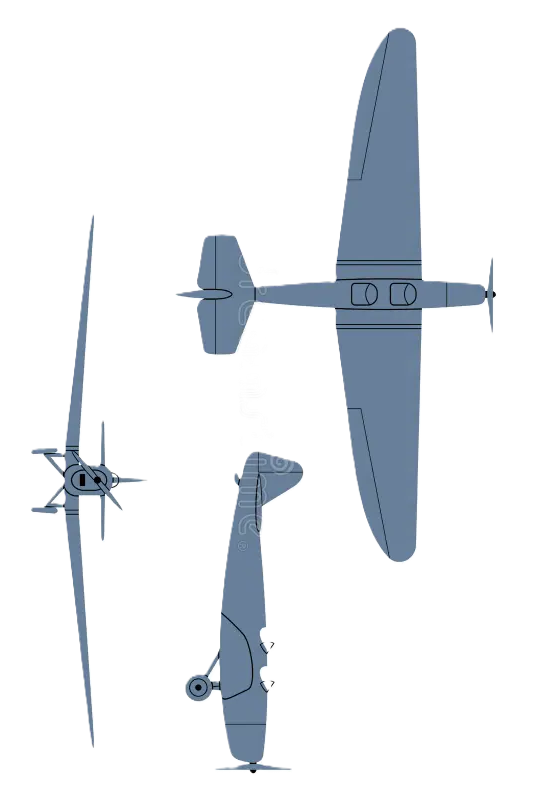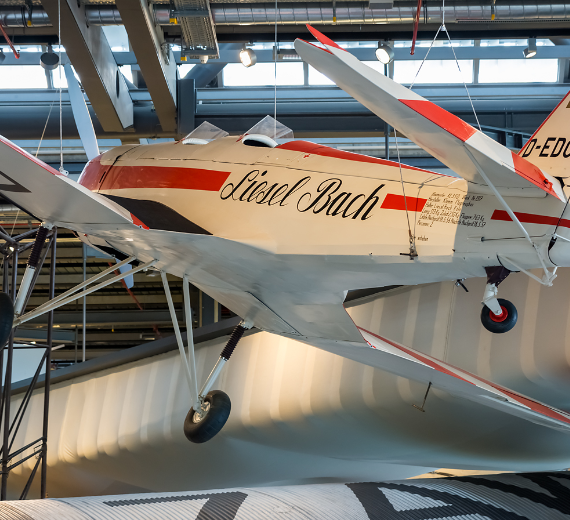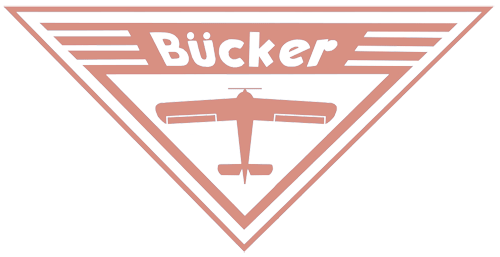Klemm Leichtflugzeugbau GmbH Klemm Kl 35
 |
|
| Klemm Kl 35D | |
| Role | Two-seat sports and training aircraft |
|---|---|
| Manufacturer | Klemm Leightflugzeugbau Gmbh |
| Designer | Friedrich Fecher |
| First flight | 1935 |
| Introduction | 1935 |
| Status | out of service |
| Primary users | Luftwaffe Czechoslovakian Air Force Royal Hungarian Air Force Royal Romanian Air Force |
| Produced | 1937-1944 |
| Number built | c.2,000? |
.
History Klemm Leichtflugzeugbau GmbH
Klemm Kl 35
(Two-seat sports and training aircraft)
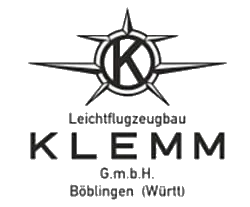
The Kl 35 was designed in 1934 under the auspices of the Reichsluftfahrtministerium (RLM). Dipl. Ing. Friedrich Fecher had overall responsibility for the construction. The so-called Gemischtbauweise construction was used: steel for fuselage, wood for wings and tail units and only small quantities of light alloy for linings were used. This became a preferred building method with the RLM around this time, because from considerations of strategic material availability.
The Klemm Kl 35 is a German sporting and training aeroplane developed as a successor to the Kl 25. A product of Klemm Leichtflugzeugbau Gmbh it shared the same single-engine, cantilever low-wing configuration as the earlier machine, the major difference being the introduction of an inverted gull wing.
Engines

Probably Klemm's most important type, the fully aerobatic aeroplane was shown for the first time publicly in October 1935 at the international Air Show in Milan and soon found many private buyers. Powered initially by an 80 hp (60 kW) Hirth HM60R inline, it had fixed undercarriage, mixed wood and fabric covering, and the choice of open or closed cockpit.[1] Powered by the Hirth 60R, it became the Kl 35A (with floats, Kl 35AW), while with the 105 hp (78 kW) Hirth, it was the Kl 35A (with floats, Kl 35AW).
An improved Kl 35D, designed as a Luftwaffe trainer, with 105 hp (78 kW) Hirth HM 504A-2 engine and the option of ski or float landing gear, appeared in 1938. It was the most numerous, with over three thousand built.
A number of air forces purchased copies, including the Romanian, Hungarian, and Slovak. The Swedish Air Force bought several, designated Sk 15, for training use (at least five of those were seaplanes) and in 1941 began licence production, building about 74 more,with some remaining in service until 1951. The Lithuanian air force flew three.

0
KmCeiling
0
KmCombat RANGE
0
Km/hAircraft Speed
0
Max Crew
Photo Gallery
Klemm Leichtflugzeugbau GmbH
Klemm Kl 35 (Two-seat sports and training aircraft)


Klemm Leichtflugzeugbau GmbH
Klemm Kl 35 (Two-seat sport aircraft)
Info Arado Ar-324 Blitz
-
-
- Crew: 2
- Length: 7.5 m (24 ft 7 in)
- Wingspan: 10.4 m (34 ft 1 in)
- Height: 2.05 m (6 ft 9 in)
- Wing area: 15.2 m2 (164 sq ft
-
Powerplant
-
- Empty weight: 460 kg
- Max takeoff weight: 750 kg
- Powerplant: 1 × Hirth HM 60R 4-cylinder inverted air-cooled in-line piston engine, 60 kW (80 hp)
- Propellers: 2-bladed fixed-pitch propeller
-
-
-
Performance
- Maximum speed: 212 km/h
- Cruise speed: 190 km/h
- Range: 665 km (413 mi, 359 nmi)
- Service ceiling: 4,350 m
.
Links to Youtube & Others
Production ended in May 1943 with total production for the Luftwaffe having reached 1,302. The balance of production was for private and export customers, though since these would have to number nearly 700 to reach the oft-quoted total of around 2,000 this may be exaggerated.
Klemm GmbH
Klemm Kl 35 sports
Further orders, to a total of 1,386, followed and new variants came on line, beginning with the Kl 35B with a new engine.
Youtube Link
An improved Kl 35D, designed as a Luftwaffe trainer, with 105 hp (78 kW) Hirth HM 504A-2 engine and the option of ski or float landing gear, appeared in 1938
